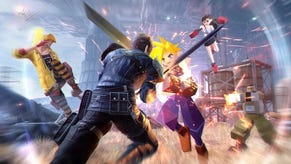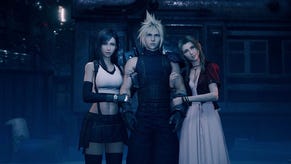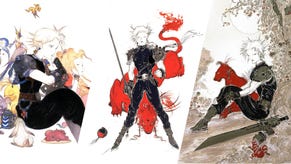What Final Fantasy VII Taught Me
Some of us are only capable of learning lessons the hard way.
This article first appeared on USgamer, a partner publication of VG247. Some content, such as this article, has been migrated to VG247 for posterity after USgamer's closure - but it has not been edited or further vetted by the VG247 team.
Today marks 20 years since Final Fantasy VII hit North American shores, and I'm hard-pressed to think of another game I have such a complicated relationship with.
I'm a huge fan of Final Fantasy VI. I know, it's hard to believe, but I've dropped a couple of hints about my adoration here and there. I automatically assumed Final Fantasy VII would wind up on the N64, and my adoration for Nintendo and Square properties would conveniently be sated via a single console. I even bought into the rumor that a Silicon Graphics workstation demo of Final Fantasy VI was a new Final Fantasy game for Nintendo 64.

But game news moved much more slowly in the mid-'90s, and while I was dreaming about a new Final Fantasy on Nintendo's 64-bit system, Squaresoft had long since realized the PlayStation was far better suited for its needs. And when game magazines started publishing news blurbs about Square's disdain for the N64's cartridges, I desperately clung to the screenshots of the Silicon Graphics demo as proof that Final Fantasy VII would never come to the PlayStation. Never mind that the demo looked far better than any N64 game screenshots published at the time – and never mind I knew in my heart of hearts that Squaresoft wouldn't simply recycle Final Fantasy VI's cast for Final Fantasy VII.
The truth inevitably came into the light: Final Fantasy VII was coming to PlayStation. As someone with a deep emotional attachment to Nintendo and cash enough for an N64 or a PlayStation, I had a big problem. I settled on the N64 and salved my wounded heart by scorning Final Fantasy VII whenever the chance arose (I was a budding internet user, so chances were myriad!). I also convinced myself I wouldn't need the game once Quest 64 came to the N64.
Ladies and gentlemen, the preceding sentence is the funniest thing I've ever written.
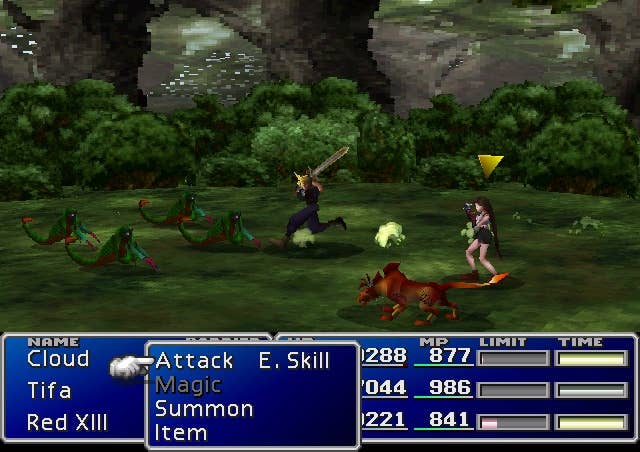
Thankfully, my period of denial was short. I realized while Nintendo's franchises are exclusive to its own hardware, third parties like Squaresoft, Capcom, and Konami were pressing their best games onto CDs. And, to be honest, "Buy Nintendo systems for Nintendo's properties, but buy other systems for third-party games" is still the law of the digital land.
So I started saving up for a PlayStation and Final Fantasy VII. My parents weren't impressed with my goal, nor were they receptive to my grand awakening about the differences between cartridge games and CD games. To them, all Nintendo Boxes were one in the same; they thought I was being ripped off. There is nothing new under the sun.
Even after I acquired a PlayStation and Final Fantasy VII (insert Final Fantasy victory theme here), my relationship with the game proved rocky. As a massive fan of Final Fantasy IV, VI, Secret of Mana, and more traditional-looking RPGs, I wasn't impressed by the dark, smoky streets of Midgar. When I finally gained access to the world map and discovered I could visit more traditional RPG landscapes like forests and plains, I let out an audible "Wheeew." To this day, I still feel a sense of relief when the gang puts down the Motor Ball boss on the Shinra highway. When they ponder what to do next while looking at the sunrise, I feel like the game's finally starting for real.

At the same time, the scene makes me a bit sad. Midgar isn't my favorite setting for an RPG, but it's interesting. I'm still blown away at how meticulously Square built each room in the slum. Every single one tells a story through its posters and belongings. Broke buses are shops. Metal tubes are counters. Small televisions flicker with a constant stream of Shinra propaganda. Nothing else in the game looks as genuine as Midgar.
Then there's the scene where Aeris is taken away by the Turks, and Cloud and co. decide they should probably tell her mother, Elmyra. No joke, Elymra's recollection of finding and raising Aeris still kills me whenever I watch it. It's wonderfully choreographed, and accompanied by an orchestrated rendition of Aeris' theme that only plays a few times throughout the game. The scene not only cements Aeris' importance to the plot, but it also conveys the loneliness that inspired Elmyra to adopt Aeris in the first place.
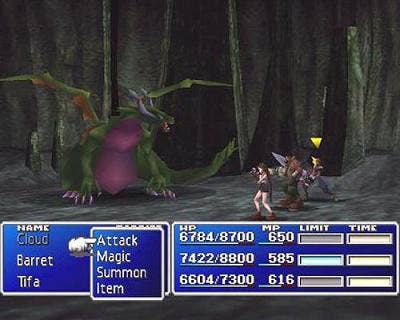
But before that, you walk down the streets of Sector 6 and encounter a ridiculous enemy called a Hell House. That's right. Most of the enemies you fight in Midgar are bandits, thieves, and attack dogs, but once in a while you just run into a haunted dollhouse of some kind. Why? I don't know. My best guess is that it was easy to build with polygons, and someone at Squaresoft needed their "My First 3D Modeling Project" badge.
Ah, but isn't Final Fantasy VII's masterful delivery of serious themes ten minutes before it spins off the rails the reason why so many of us are writing conflicted memorials now, 20 years later? Final Fantasy IV delivers a straight-forward but compelling pastiche of Star Wars' struggle of good versus evil. Final Fantasy V gives us a deeply customizable battle system. Final Fantasy VI tells a tight, easy-to-follow story about the folly of pursuing power. And Final Fantasy VII veers to and fro while it talks about environmental terrorism, economic decline, war, genocide, identity crises, poverty, etc, etc, etc.
Playing Final Fantasy VII is like watching a puppy pick up new scents on a walk: Its movements don't make a lot of sense, but damn, it's fun to experience. How appropriate it's also the game that taught me this industry isn't as straightforward as I initially believed.






